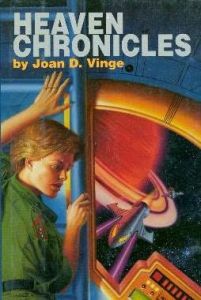Mary Robinette Kowal is an American speculative fiction writer, puppeteer, and voice actor who has won two Hugo awards for her short fiction. I’ve previously reviewed her novella Forest of Memory, here.

The Calculating Stars is the first volume in the ‘Lady Astronaut’ duology, written as a prequel to her 2013 novella The Lady Astronaut of Mars.
Elma York, mathematician and former WASP, is out of town in the Poconos on March 3, 1952 for a romantic weekend with her engineer husband Nathaniel when, in about the most literal sense possible, disaster strikes. An asteroid impacts the Atlantic Ocean just off the coast of Maryland, obliterating a fair chunk of the eastern seaboard as well as the seat of government (and, it also transpires, Elma’s parents). The Yorks’ Cessna is sheltered in a nearby barn from the impact’s blast front, enabling Elma and Nathaniel to make a beeline for Charleston and the home of Elma’s grandmother, but the meteorite’s ejecta damages the plane and Elma makes an emergency landing at a military airbase in Kansas. The Government has been wiped out (they eventually find an intact cabinet member), hundreds of thousands—if not millions—have been killed in the asteroid strike, but that’s not the worst of it. It becomes apparent that, alongside a considerable quantity of ash and dust (which will lead, for the next few years, to substantial cooling), the oceanside strike has pushed so much water vapour into the atmosphere to presage the uncontrolled warming of a runaway greenhouse effect for the decades that follow. US experimentation with rocketry is in its infancy, but there is suddenly a pressing need for a space program—if the Earth becomes uninhabitable, colonies in orbit or on the Moon may provide some sanctuary for human life. With Elma’s mathematical expertise and flight experience, and Nathaniel’s familiarity with propulsion technologyand other aspects of rocketry, the Yorks soon become an integral part of the International Aerospace Coalition’s Kansas-based plans to make manned spaceflight possible (a decade or more before, in an alternate universe, Apollo 11 would reach the Moon); but Elma wants more. She wants to become an astronaut herself. The Calculating Stars is the story of her struggles towards that end.
This is a richly imagined book, carefully detailed, artfully paced. Any comparison is going to be misleading, in some measure, but with its blend of scientific detail, political detail, social analysis and character drama it reads like one of Jack McDevitt’s contemporary SF novels (Ancient Shores, The Hercules Text) infused, perhaps, with the optimism of David Brin’s SF and the expertise in characterisation of Amy Thomson’s. But this makes it sound like a patchwork or chimaera, and it is most definitely its own thing. It’s a remarkably warm and generous example of character-driven hard SF—Elma’s thwarted ambitions become a lodestone for the challenges, not just of the sexism that would (in the eyes of the IAC hierarchy) see her grounded, but also of the racism that sees eminently-capable black candidates (of any gender) deliberately excluded through carefully-designed rules—and Kowal has taken considerable pains (as detailed in a five-page ‘Historical Note’ appended after the story) to get the details right. Furthermore, the novel’s dozens of recognisable characters are all treated as individuals with depth and with various strengths and weaknesses: if Nathaniel at times seems like an impossibly idealised supportive husband, the incredibly accomplished mathematician/pilot Elma is riven by an anxiety disorder so debilitating in times of stress (mostly, of unwanted public attention, a problem exacerbated by her growing visibility as a space-program figurehead) that the medication prescribed for this stress could well see her ejected from the program even if her gender doesn’t. And plenty of the other characters, most notably the veteran pilot Stetson Parker who seems for the most part to cultivate a personal enmity towards Elma, serve as both opponents and sounding boards, with redemptive features present in even the most infuriating characters. There’s plenty of character conflict, but it’s ultimately a story without any absolute villain except circumstance, and it’s a refreshing read because of that. I might complain that, in parts, it seems idealised—I’m not convinced that the advances in civil liberties presented here would occur with so little bloodshed, even in an alternate version of 1950s America; and that, in other parts, it appears to take shortcuts—there’s comparatively little narrative attention focussed on the changing climate, given the centrality of this as a modus operandi for the race to orbit and beyond, though this is a possibly-unavoidable consequence of how much of the novel is played out within the closed (and, one presumes, climate-controlled) confines of the IAC offices and control rooms; but overall, it’s a highly-impressive piece of hard SF, and I am looking forward to the imminent release of its successor, The Fated Sky.
(This is the fifteenth in my occasional ‘XX Hard SF’ series of reviews, on women writers of hard SF. For the purpose behind the series of reviews, see my posts here and here; for a listing of the books reviewed in this project, refer here.)









